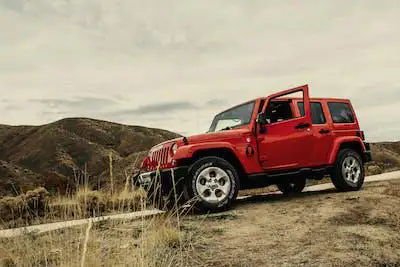The Engine Under the Hood:
Power and Performance: Bigger engines, translating to more horsepower and torque, generally command a premium. V8s and turbocharged engines, while offering thrilling acceleration, come at a steeper price compared to fuel-efficient four-cylinder counterparts.
SUV engine
Fuel Efficiency: SUVs, notorious for their larger appetites, can vary significantly in fuel economy. Hybrid and electric options, though often pricier upfront, offer long-term savings at the pump, especially with rising fuel costs.
Size Matters:
Compact vs. Full-Size: The larger the SUV, the heftier the price tag. Compact SUVs offer better maneuverability and affordability, while full-size behemoths boast expansive interiors and towing prowess, but at a cost.
compact SUV vs fullsize SUV
Third-Row Seating: The coveted third-row seating adds versatility and convenience, but also translates to a higher price tag due to increased manufacturing costs and complexity.
Features and Amenities:
Technology Package: Advanced driver-assistance systems, premium sound systems, and panoramic sunroofs all contribute to a pricier SUV. Be mindful of which features truly enhance your driving experience and avoid paying for bells and whistles you might not utilize.
SUV with panoramic sunroof
Interior Finishes: Leather upholstery, heated seats, and premium materials elevate the comfort and luxury quotient, but come at a cost. Opting for cloth interiors or synthetic materials can offer significant savings.
Market Forces and Brand Power:
Demand and Supply: Popular models with high demand often carry a premium price tag, while less sought-after SUVs might offer better deals. Research market trends and compare prices across different dealerships to find the best value.
Brand Reputation: Established luxury brands like Land Rover and Mercedes-Benz command higher prices due to their prestige and perceived quality. Consider alternative brands offering similar features at a potentially lower cost.
Beyond the Sticker Price:
Remember, the sticker price is just the tip of the iceberg. Additional costs like destination fees, taxes, and dealer markups can inflate the final amount. Factor in ongoing expenses like insurance, maintenance, and fuel to get a realistic picture of the total cost of ownership.
Negotiation: The Art of the Deal:
Don't be afraid to negotiate! Research fair market prices and be prepared to walk away if the deal isn't right. Consider alternative financing options like leasing or certified pre-owned vehicles to find the SUV that fits your budget and needs.
Making Informed Choices:
Understanding the factors affecting SUV prices empowers you to make informed choices. Prioritize your needs and driving habits, compare options across brands and dealerships, and negotiate effectively. Remember, the perfect SUV is one that balances your desired features, budget, and long-term ownership costs.
Bonus Tip: Consider the Total Cost of Ownership (TCO). This includes not just the purchase price but also fuel, insurance, maintenance, and depreciation. A seemingly "cheap" SUV might have higher TCO due to poor fuel economy or rapid depreciation, while a pricier model might offer long-term savings due to its efficiency and reliability.
By demystifying the factors that influence SUV prices, you can navigate the car-buying journey with confidence, ensuring you find the perfect chariot that fits your budget and fuels your adventures. Happy SUV hunting!

